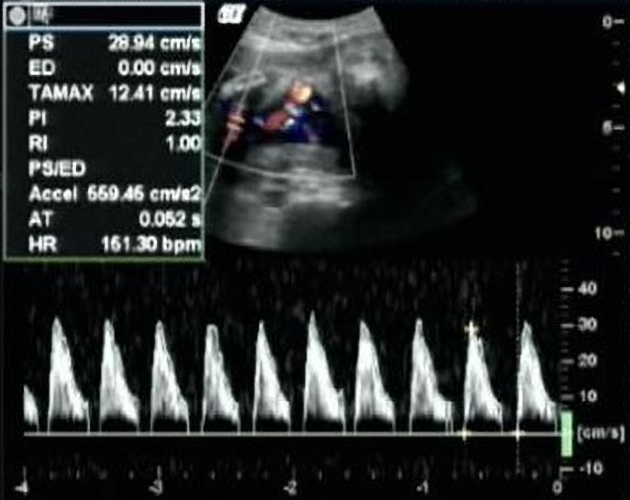Absent end-diastolic flow (AEDF) in an umbilical artery Doppler assessment is a useful feature that indicates underlying fetal vascular stress if detected in mid or late pregnancy. It is often classified as Class II in severity in abnormal umbilical arterial Dopplers 9.
On this page:
Epidemiology
Associations
increased risk of neonatal thrombocytopenia 6
increased risk of necrotizing enterocolitis 1
Pathology
The presence of absent end-diastolic flow (AEDF) can be normal in early pregnancy (up to 16 weeks). In mid to late pregnancy it usually occurs as a result of placental insufficiency 7,8. Flow in the umbilical artery should be in the forward direction in normal circumstances. If placental resistance increases, the diastolic flow may reduce, later becoming absent and finally reverses.
Radiographic features
Doppler ultrasound
The umbilical arterial velocity is seen reducing to zero at end-diastole. The impedance is found to be highest at the fetal end of the umbilical cord and therefore the absence of end-diastolic flow is seen first in this region.
Treatment and prognosis
The situation is associated with an increased risk of fetal and neonatal mortality, as well as an increased incidence of long-term permanent neurologic damage 5.
Approximately one-third of cases may improve with bed rest. Often it is recommended that close follow-up or expeditious delivery be pursued 7.





 Unable to process the form. Check for errors and try again.
Unable to process the form. Check for errors and try again.